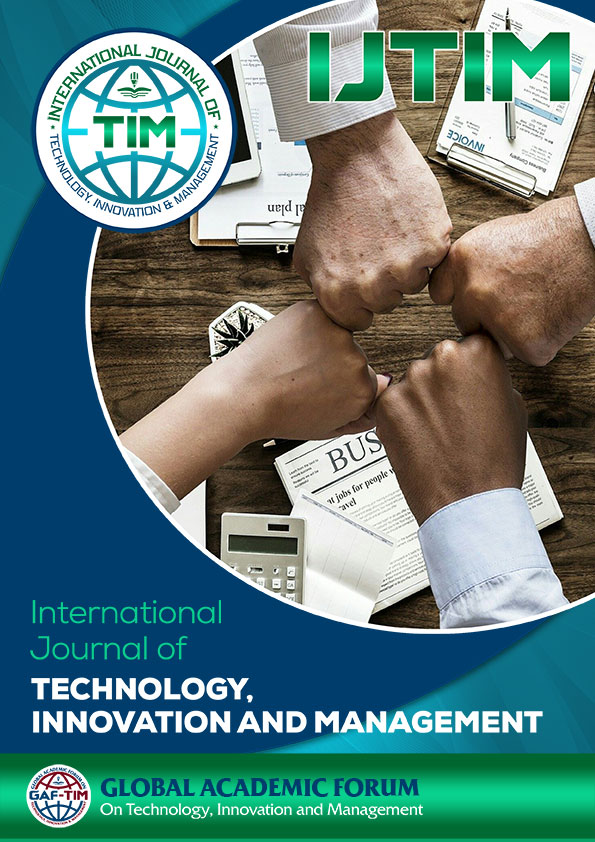Employing Advanced Deep Learning Technology for the Detection of Kidney Stones in Unenhanced Computed Tomography (CT) Imaging: A Model-Based Approach
DOI:
https://doi.org/10.54489/ijtim.v3i2.281Keywords:
kidney stones, medical images, deep learning, convolutional neural networksAbstract
Kidney stones are currently considered a very common disease and recent studies have shown a tendency for the incidence of this disease to increase in recent years. The disease is recognized as a serious threat to the population's health because it is associated with other serious illnesses that can greatly compromise people's quality of life. The development of technologies and strategies aimed at aiding the diagnosis and treatment of this disease has the potential to improve the quality and effectiveness of services provided by health professionals. Diagnosis based on medical images has been one of the main tools for diagnosing kidney stones and Deep Learning techniques have been widely proposed to perform this task. This study proposes a Deep Learning model for detecting kidney stones in computed tomography images. The model was trained with a dataset composed of images obtained from individuals who underwent examinations to analyze diseases in the urinary system. The model achieved an accuracy rate of 96.20% in its predictions and proved to be a suitable tool for treating the problem in question. The results obtained in this study demonstrate the potential of Deep Learning techniques as tools to help improve healthcare procedures related to imaging diagnosis.
References
J. Lang et al., "Global trends in incidence and burden of urolithiasis from 1990 to 2019: an analysis of Global Burden of Disease Study data," European Urology Open Science, vol. 35, no. 1, pp. 37-46, Jan. 2022, doi: 10.1016/j.euros.2021.10.008 DOI: https://doi.org/10.1016/j.euros.2021.10.008
L. Zhang et al., "Global, regional and national burden of urolithiasis from 1990 to 2019: a systematic analysis for the Global Burden of Disease Study 2019," Clinical Epidemiology, vol. 14, no. 1, pp. 971-983, Jul. 2022, doi: 10.2147/CLEP.S370591 DOI: https://doi.org/10.2147/CLEP.S370591
S. Iqbal et al., "On the analyses of medical images using traditional machine learning techniques and convolutional neural networks," Archives of Computational Methods in Engineering, vol 30, no. 3, 3173-3233, Apr. 2023, doi: 10.1007/s11831-023-09899-9 DOI: https://doi.org/10.1007/s11831-023-09899-9
T. Alelign and B. Petros, "Kidney Stone Disease: an update on current concepts," Advances in Urology, vol. 2018, no. 1,
pp. 3068365, Feb. 2018, doi: 10.1155/2018/3068365 DOI: https://doi.org/10.1155/2018/3068365
F. Khan et al., "A comprehensive review on kidney stones, its diagnosis and treatment with allopathic and ayurvedic medicines," Urology & Nephrology Open Access Journal, vol. 7, no. 4, pp. 69-74, Aug. 2019, doi: 10.15406/unoaj.2019.07.00247 DOI: https://doi.org/10.15406/unoaj.2019.07.00247
A. Viljoen et al., "Renal stones," Annals of Clinical Biochemistry, vol. 56, no. 1, pp. 15-27, Jan. 2019, doi: 10.1177/0004563218781672 DOI: https://doi.org/10.1177/0004563218781672
W. Brisbane et al., "An overview of kidney stone imaging techniques," Nature Reviews Urology, vol. 13, no. 11, pp. 654-662, Nov. 2016, doi: 10.1038/nrurol.2016.154 DOI: https://doi.org/10.1038/nrurol.2016.154
Z. T. A-Sharify et al., "A critical review on medical imaging techniques (CT and PET scans) in the medical field," IOP Conference Series: Materials Science and Engineering, vol. 870, no. 1, pp. 012043, Feb. 2020, doi: 10.1088/1757-899X/870/1/012043 DOI: https://doi.org/10.1088/1757-899X/870/1/012043
S. Hussain et al., "Modern diagnostic imaging technique applications and risk factors in the medical field: a review," BioMed Research International, vol. 1, no. 1, pp. 5164970, Dec. 2022, doi: 10.1155/2022/5164970 DOI: https://doi.org/10.1155/2022/5164970
M. H. Ather et al., "Non-contrast CT in the evaluation of urinary tract stone obstruction and haematuria," Computed Tomography - Advanced Applications, vol. 1, no. 1, pp. 5164970, Aug. 2017, doi: 10.5772/intechopen.68769 DOI: https://doi.org/10.5772/intechopen.68769
D. R. Sarvamangala and R. V. Kulkarni, "Convolutional neural networks in medical image understanding: a survey," Evolutionary Intelligence, vol. 15, no. 1, pp. 1-22, Jan.
, doi: 10.1007/s12065-020-00540-3 DOI: https://doi.org/10.1007/s12065-020-00540-3
L. Alzubaidi et al., "Review of deep learning: concepts, CNN architectures, challenges, applications, future directions," Journal of Big Data, vol. 8, no. 1, pp. 53, Mar. 2021, doi: 10.1186/s40537-021-00444-8 DOI: https://doi.org/10.1186/s40537-021-00444-8
K. Yildirim et al., "Deep learning model for automated kidney stone detection using coronal CT images," Computers in Biology and Medicine, vol. 135, no. 1, pp. 104569, Jun. 2021, doi: 10.1016/j.compbiomed.2021.104569 DOI: https://doi.org/10.1016/j.compbiomed.2021.104569
M. Hashemi, "Enlarging smaller images before inputting into
convolutional neural network: zero-padding vs. interpolation," Journal of Big Data, vol. 6, no. 1, pp. 98, Nov. 2019, doi: 10.1186/s40537-019-0263-7 DOI: https://doi.org/10.1186/s40537-019-0263-7
Çaglayan, Alper & HORSANALI, Mustafa & Kocadurdu, Kenan & Guneyli, Serkan & ismailoglu, eren. (2022). Deep learning model-assisted detection of kidney stones on computed tomography. International braz j urol: official journal of the Brazilian Society of Urology. 48. 10.1590/S1677-5538.IBJU.2022.0132. DOI: https://doi.org/10.1590/s1677-5538.ibju.2022.0132
Romero, V.; Akpinar, H.; Assimos, D.G. Kidney stones: A global picture of prevalence, incidence, and associated risk factors. Rev. Urol. 2010, 12, e86–e96. [Google Scholar] [PubMed]
Tundo, G.; Vollstedt, A.; Meeks, W.; Pais, V. Beyond Prevalence: Annual Cumulative Incidence of Kidney Stones in the United States. J. Urol. 2021, 205, 1704–1709. [Google Scholar] [CrossRef] DOI: https://doi.org/10.1097/JU.0000000000001629
Heidenreich, A.; Desgrandschamps, F.; Terrier, F. Modern Approach of Diagnosis and Management of Acute Flank Pain: Review of All Imaging Modalities. Eur. Urol. 2002, 41, 351–362. [Google Scholar] [CrossRef] DOI: https://doi.org/10.1016/S0302-2838(02)00064-7
Metaxas, V.I.; Messaris, G.A.; Lekatou, A.N.; Petsas, T.G.; Panayiotakis, G.S. Patient doses in common diagnostic X-ray examinations. Radiat. Prot. Dosim. 2018, 184, 12– DOI: https://doi.org/10.1093/rpd/ncy169
[Google Scholar] [CrossRef]
han, H.-P.; Samala, R.K.; Hadjiiski, L.M.; Zhou, C. Deep learning in medical image analysis. Adv. Exp. Med. Biol. 2020, 1213, 3–21. [Google Scholar] [PubMed] DOI: https://doi.org/10.1007/978-3-030-33128-3_1















